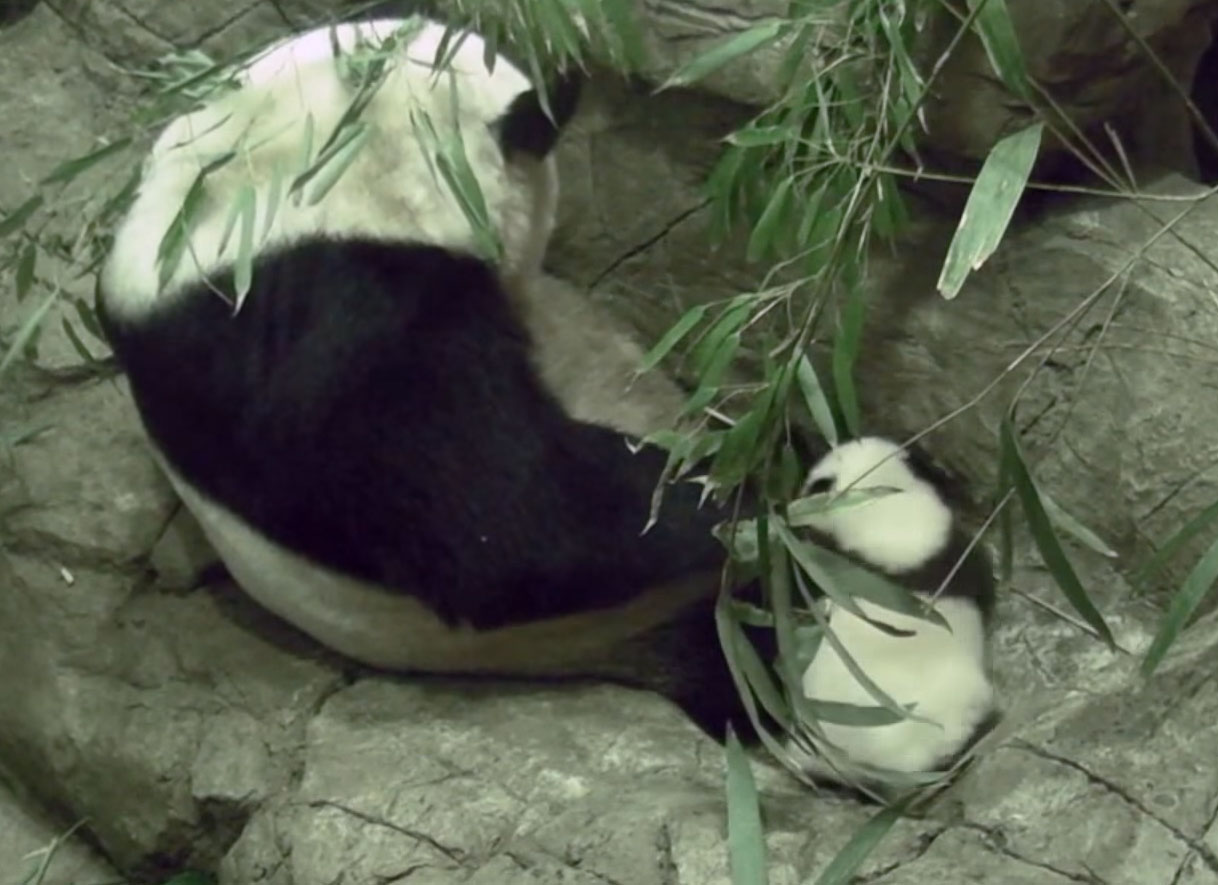Auburn Mann, Correspondent
WASHINGTON — The National Zoo continues to receive large crowds in response to the newest member of its marquee exhibit: Bei Bei, the giant panda cub.
The zoo has seen more than 346,000 visitors since the January unveiling of the surviving twin of mother Mei Xiang and father Tian Tian, according to the Smithsonian’s National Zoological Park.
Eighty percent of the National Zoo’s 2.3 million annual visitors visit the David M. Rubenstein Family Giant Panda Habitat, which is the centerpiece of the park’s Asia Trail.
There are slightly more than 1,600 pandas remaining in the world, with almost a quarter of them residing in zoos and preservation facilities, according to the Smithsonian. The animals are native to the mountain ranges of Central China. However, due to continued deforestation and other human industrial activities, the species is endangered.
Even among zoos, giant pandas are a rarity. The National Zoo is one of only four in the United States to feature the species. This scarcity only contributes to the pandas allure.
“The fact that we are one of the only zoos in the country to offer giant pandas definitely helps with our popularity,” said zoo spokesman Devon Murphy.
A group of eighth-graders from Seaside and Los Arboles Middle Schools in Monterey County, Calif., were part of a sea of tourists recently. The students made the trip across the country especially to see Bei Bei and the other giant pandas.
“I looked forward to seeing the pandas, that was the most exciting part,” said eighth-grader Oakley Pelton.
“It was so cute and cuddly, I wanted to take it home,” said her classmate, Amaya Valenzuela, whose arms were wrapped around a stuffed panda souvenir she purchased at the nearby gift shop.
The irresistible appeal of pandas has a scientific explanation, according to Dr. Simon Rego, director of psychology training at Montefiore Medical Center, Albert Einstein College of Medicine in New York.
It’s all about evolution, he said.
“The leading theory suggests that we tend to find most appealing the animals that have characteristics — a large head and eyes, small nose and mouth, protruding cheeks and forehead, etcetera — that are similar to our own infants,” Rego said.
“We are biologically programmed to respond to with a nurturing reaction. This automatic reaction is hypothesized to be so powerful that it can be activated by other species with similar traits.”
Those who can’t make it to the National Zoo, can follow the activities of Bei Bei and his family through the zoo’s webcam, which provides live stream footage of the animals.
“The National Zoo is conducting a behavioral study on panda development for the first few months of Bei Bei’s development,” Murphy explained.
There are two cameras in the habitat, with one always on Bei Bei and Mei Xiang.
“We want to monitor how much time they spend together and away from each other, how close they get, how and when they communicate,” Murphy said.
Bei Bei, whose name means “precious treasure” in Mandarin, was named by both First Ladies Michelle Obama and Peng Liyuan of China last September when China’s first family came for a state visit.
The presence of giant pandas in Washington is rooted in international diplomacy.
Originally given to the United States as a goodwill gesture from China during the restoration of relations between the two nations in the early 1970s, the current family of giant pandas remain here on long-term loan.
After negotiations, the lease on Tian Tian and Mei Xiang recently was extended until 2020. Any of the pair’s offspring are required to be sent to China upon reaching age four.
Bei Bei is scheduled to be sent to China in 2019 to join his older siblings, Bao Bao (who is scheduled for relocation from Washington when she turns four years old in 2017) and Tai Shan, who currently resides at the Dujiangyan Panda Base.






